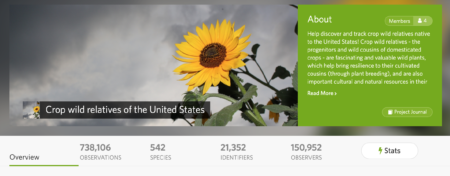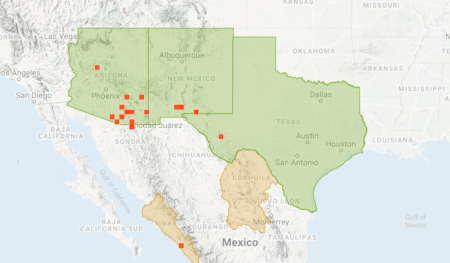- In Praise of Seed Morgues. You heard me. Webinar next week: sounds like a doozy.
- Plan of Action on Forgotten Foods. Another webinar next week.
- Walk into the Gateway. The GenRes Gateway, that is, “a crowd-sourced platform to guide you through the landscape of forest, plant and animal genetic resources in Europe.” A third webinar. Looks like I’ll be busy next week.
- Maybe I’ll read about how to evaluate agroecology in the meantime.
- Agroecology is not on FarmGeek, but other interventions are, like GMOs and “genetic diversity” (ie cultivar mixtures) and you can explore how effective they are around the world.
- Speaking of genetic diversity, there’s a lot of it in ICRISAT’s pearl millet fields at the moment, though not in cultivar mixtures. And breeders are having a busy week of it.
Nibbles: Dates, Patagonian berries, Wild edibles, Barley breeding, African grains, Tea & CC, Grapes
Nibbles: Emissions, Anthromes, S Asian farming origins, Old seeds, Chestnut, Canadian heirlooms, ABS newsletter
- Food contributes 1/3 of greenhouse gas emissions.
- How we got to the above.
- And a focus on how farming started in South Asia in particular.
- A long-term seed experiment carries on.
- Another chapter in the story of the comeback of the American chestnut?
- Want to help a heirloom make a comeback?
- There’s a newsletter on the law and policy behind all this stuff.
Nibbles: Evidence, Agroecology, Iconography, Cryo
- Educational materials for conservation.
- Seminar on agroecology next week by Professor of Agroecology Steve Gliessman.
- Why is there a citron in Van Eyck’s Ghent altarpiece?
- APPS Special Issue Call for Papers: “Meeting the Challenge of Exceptional Plant Conservation: Technologies and Approaches.”
Citizens map crops and their wild relatives
Our friend and occasional contributor Colin Khoury has made a “project” on iNaturalist focusing on the crop wild relatives found in the USA.

iNaturalist collates and manages citizen science observations of living things, with a machine learning algorithm helping with species identification. If the observation you document on your phone app gets verified by two other people, it’s rated as “Research Grade,” and included in GBIF.
Colin also had a go at pulling together observations on major food crops, though there’s no way of including only observations of cultivated material. This is a map of tepary beans (Phaseolus acutifolius), for example.

Cool, no? Join in! There’s only one observation of Bambara groundnut. Surely we can do something about that.